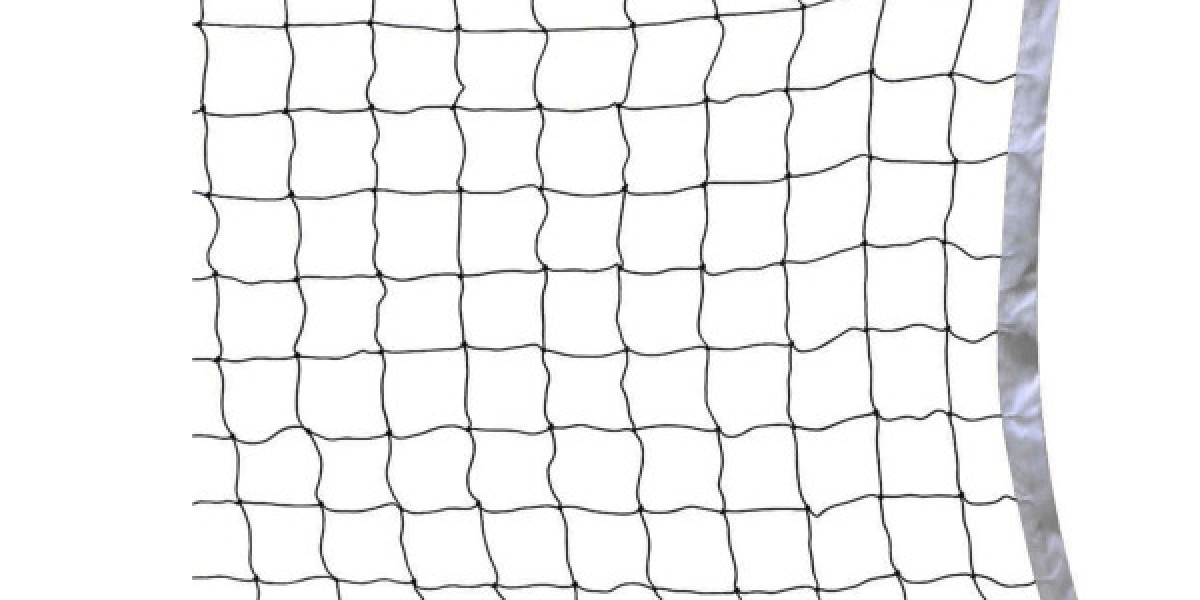Volleyball is one of the most accessible and exciting sports for people of all ages. Whether you're setting up a backyard game, organizing a beach match, or equipping a gym, having the right volleyball net makes all the difference. If you're searching for the best volleyball gear, check out this complete selection of volleyball nets for every setting.
What Is a Volleyball Net?
A volleyball net is the central piece of equipment in the game. It divides the court and serves as the obstacle over which the ball must pass. The net is essential for regulating gameplay, promoting fairness, and ensuring consistency in matches—both recreational and professional.
Standard Volleyball Net Dimensions
Understanding net dimensions is important whether you're setting up for a casual game or preparing for a competition.
Type of Play Net Height (Men) Net Height (Women) Width Length
Indoor Volleyball 7 ft 11 5/8 in 7 ft 4 1/8 in 1 m 9.5 m
Beach Volleyball 7 ft 11 5/8 in 7 ft 4 1/8 in 1 m 8.5 m
These official measurements ensure the game is fair and standardized, especially in organized sports.
Types of Volleyball Nets
1. Indoor Volleyball Nets
Used in gyms and sports complexes, these nets are made from durable materials like nylon or polyester with heavy-duty cable tops for tension.
2. Outdoor Volleyball Nets
These are built for weather resistance. Outdoor nets are perfect for schoolyards, backyards, or recreational parks and are often UV and water-resistant.
3. Beach Volleyball Nets
Typically shorter and lighter than indoor nets. Beach volleyball nets also include adjustable poles for uneven sandy surfaces.
4. Portable Volleyball Nets
Great for easy transport and setup, portable systems are ideal for casual players or those with limited space.
How to Choose the Right Volleyball Net
Picking the best volleyball net depends on your playing environment and usage frequency.
1. Consider the Environment
Indoor Use: Look for reinforced netting and a thick cable top.
Outdoor Use: Prioritize weatherproof materials like coated nylon and rust-resistant poles.
2. Net Tension System
Rope Cable: Affordable but harder to keep tight.
Steel Cable: Best for consistent tension.
Kevlar Cable: Lightweight and extremely strong, used in professional setups.
3. Pole System
Freestanding Poles: Easy to move but may lack stability.
Ground-Inserted Poles: More stable and preferred for permanent installations.
4. Size & Adjustability
Choose a net that can be adjusted for different levels, especially if it’s for community use or family games.
Top Features to Look For
Durable Stitching: Ensures longevity even with intense play.
Weather Resistance: Essential for outdoor use.
Easy Assembly: Especially important for portable nets.
Storage Bag Included: Makes it convenient to carry and store.
Best Volleyball Net Brands to Consider
Park & Sun Sports – Known for its tournament-grade nets and premium pole systems.
Baden – Offers reliable nets for both indoor and outdoor use.
Franklin Sports – Ideal for family play and recreational users.
Champion Sports – Provides both budget and professional-grade volleyball nets.
Volleyball Net Maintenance Tips
To extend the life of your volleyball net, follow these simple maintenance tips:
Store Indoors: When not in use, especially during harsh weather.
Check for Tension: Regularly inspect cables and ensure the net stays taut.
Clean After Use: Wipe down the net and poles if exposed to sand, dirt, or rain.
Avoid Dragging: Always lift and fold the net to prevent tearing.
Common Mistakes to Avoid When Buying a Volleyball Net
Choosing the Wrong Size: Always check the official dimensions if you're playing organized games.
Ignoring Cable Type: A weak cable won’t hold tension and will sag.
Overlooking Setup Time: Complicated systems can be frustrating without help or tools.
Buying Based on Price Alone: Cheap nets often break after limited use.
Volleyball Net Setup: Step-by-Step
Mark Court Dimensions: Start with proper court lines.
Place Poles Securely: Use anchors or secure poles deep in the ground.
Unroll the Net: Align the center and connect to each pole.
Tension the Net: Adjust the cable for a tight, flat alignment.
Test Stability: Ensure poles don’t sway and net stays centered.
Who Needs a Volleyball Net?
Schools & Colleges: For gym classes and tournaments.
Community Centers: Outdoor public parks or sports grounds.
Families & Individuals: For backyard games or vacations.
Professional Players: For training or competitions.
Benefits of Investing in a Quality Volleyball Net
Better Gameplay: A taut, sturdy net improves the game flow.
Injury Prevention: No sagging or tripping hazards.
Longevity: High-quality materials last for seasons.
Versatility: Suitable for multiple environments and play levels.
Buying Online vs. In-Store
Buying Online
Pros: More options, price comparisons, reviews, and fast delivery.
Cons: Can’t test build quality in advance.
Buying In-Store
Pros: Inspect quality, get help from staff, and immediate pickup.
Cons: Limited options and possibly higher prices.
Many users prefer buying volleyball nets online due to convenience and discounts, especially from well-known platforms and sports gear websites.
Price Range Overview
Net Type Average Price Range
Entry-Level $30 – $60
Mid-Range $70 – $150
Professional Grade $150 – $350+
Prices vary based on material, cable type, included accessories, and brand.
Final Thoughts
Choosing the right volleyball net isn’t just about price—it’s about durability, convenience, and compatibility with your play style. Whether you're a weekend player or setting up for serious tournaments, investing in a quality net ensures better games and fewer headaches.
If you're ready to upgrade your game, don’t miss this curated list of top-rated volleyball nets suitable for every level.









